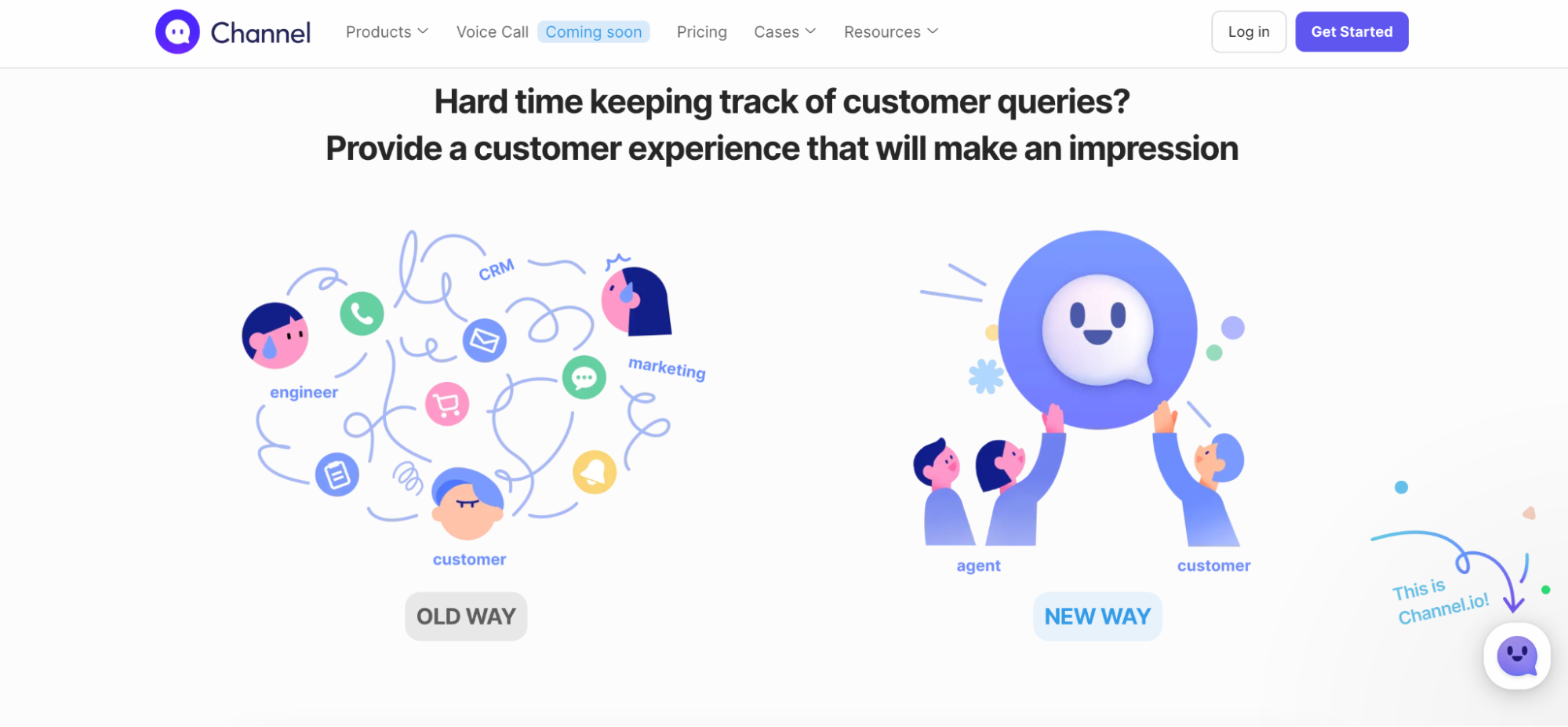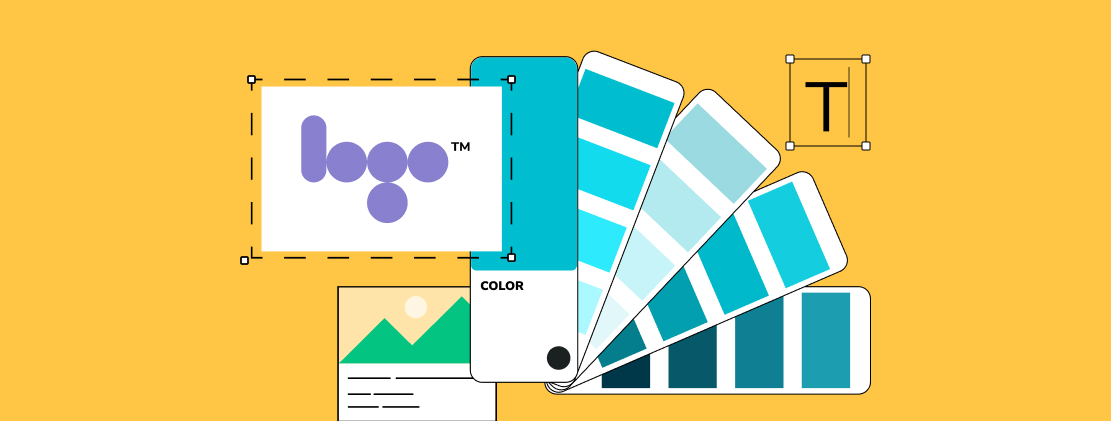How do consumers recognize your brand? What makes a brand in the first place? The answer, or a large part of it, is the visual element of your business. Most people will notice the visual elements of a brand — colors, images, and layout — before they notice copy. In short, your brand’s visual identity is crucial to brand awareness, customer retention, and long-term success.
Content:
What is visual identity?
The visual identity of your brand is the umbrella term for everything visual about your business. If you or a customer sees it, it counts as part of your visual identity. A brand’s visual identity might include the following:
- imagery;
- color palette;
- the design and layout of stores;
- web design;
- social media assets;
- content layout;
- brochures;
- adverts;
- uniforms;
- promotional items;
- buttons and animations;
- logos;
- typography.
You’ll likely come across more elements of your visual identity as your brand grows. It’s also important to consider your visual identity at all times when creating new assets for your brand or individual campaigns. This way, you’ll boost campaign engagement and help customers instantly recognize your brand.
Why is a visual identity important to your brand?
Your branding is a public statement from your business. Everyone who interacts with your business, be they staff, customers, suppliers, or a person walking past your advertisement on the street, will see how you choose to portray your brand.
Designing and maintaining a strong visual identity that represents the values and activity of your brand will help to keep your customers engaged. It will set you apart from competitors and provides another opportunity to present your unique selling points (USPs).
Commitment to your visual identity also demonstrates that your brand is passionate about its product or service. This way, you can reach out to like-minded customers or clients. Here are some examples:
- Google has a highly recognizable visual brand identity as a software brand with cloud-native apps. Its simple, bold colors and font choice, with a sleek, geometric design, make it instantly recognizable.
- As a largely B2C brand, Apple appeals to tech-savvy consumers and a sense of community, eliteness, and a love of cutting-edge technology with simple, sleek designs and copy-light assets.
In all of these scenarios, it is the visual element of a brand that prospective customers notice and engage with. From here, you can use your visual identity to highlight your fantastic copy and unique product offering.

How to create a strong visual identity for your brand
A visual brand identity is your opportunity to represent your brand’s values and proposition across your communications. Knowing how to build a quality visual identity that correctly represents your brand is key to engaging new and existing customers and, ultimately, growing your brand. Here’s how to create a winning visual brand identity that will make your brand unforgettable.
Establish your brand identity
Brand identity is slightly different from visual identity, but it is essential for a strong visual identity. Brand identity covers everything about your brand that shapes culture and communications, including:
- tone of voice and language;
- products and services;
- company culture;
- values;
- market positioning.
Think about the two concepts like an individual. You might equate brand identity to your personal identity and everything that this encompasses. By contrast, the visual aspect of your identity is just one part but forms a crucial way of expressing yourself and your identity.
The same is true for branding.

To establish your brand identity, your team should be able to name your brand’s values and approach to customers and the market as a whole. But, more importantly, you should be able to name examples of how this is put into practice. That’s how you know that your brand identity is strong and based on reality.
Once you’ve established your brand identity, try to distill it down into single words or short phrases that can be used to direct design work and visual strategy. For example, an eCommerce brand targeting young people with an interest in music might use the following:
- bold;
- transparent;
- assured;
- casual.
You can then use these concepts to build your visual identity. In this scenario, the brand’s visual identity might comprise bold, contrasting (but complementary) colors, a simple, easily-read font, and a sleek design that exudes spontaneity.
Know your audience
Strongly linked to the first point, you must know your audience inside and out before establishing your visual identity if you’re going to offer anything of value to your audience. Building brand value is no longer purely copy-based — to stand out in a potentially saturated market, you must speak to your audience’s expectations in all areas.
Depending on the stage that your brand is at, you may already have an idea of what your audience looks like. If you haven’t already, you should consider creating ideal customer profiles (ICPs) to identify:
- who your customers are;
- what they need from your brand;
- what their frustrations are;
- how your brand can address their pain points;
- traits such as interests, education levels, and purchase habits;
- location (where relevant);
- consumption habits for your content, e.g., whether they consume content on mobile or desktop, what social media platforms they use, and their watching habits.
Once you’ve laid out your customer profiles, it’s time to gather your team and identify what will visually attract these demographics. After all, even if the majority of your value-adding content exists in your copy, a brand’s visual identity will often be the first point of contact.
Plan your assets
So, now you’ve got an idea of who your audience is and what makes your brand unique and drives its messaging. It’s now time to plan out your assets.
Your visual assets include any marketing collateral that will feature your visual branding and will typically appear across your brand’s estate. Assets that you might require include:
- a logo;
- press kits;
- photography;
- social media content;
- letterhead;
- uniforms;
- in-store signage;
- video start and end cards;
- interactive content;
- graphics;
- 2D animation;
- brochureware;
- leaflets.
If you’re considering incorporating video content into your visual identity strategy, you might also want to explore using a no-watermark video editor to maintain the professional look of your brand videos without any unwanted watermarks. This can help ensure that your videos are a seamless part of your brand’s visual identity, conveying your message clearly and effectively.
You’ll also need to consult with your team across the business to find out what assets other teams require in day-to-day operations. For example, your sales team might require a high number of leaflets, spec sheets, and brochures.
You should be consistent across all assets when creating your visual identity, particularly when implementing new assets.
Invest in design
Investing in your design team is an ideal way to create a striking visual identity for your brand. A skilled team that communicates well is key to high-quality, consistent visual branding that demonstrates a clear vision for the brand.
By creating this image for your brand, you’ll not only build better brand authority — you’ll also strengthen brand recognition and visual brand awareness. Visually strong brands that speak to their customers and their interests will stick in their minds, encouraging word-of-mouth marketing as well.
For smaller brands where it may not be appropriate to implement a large design presence, a great brand kit generator is an excellent way of creating your visual identity with just a clear vision and some creativity!
Maintain brand consistency
What is the point of a brand identity? The brand itself is the product or service, but it’s also the culture and values around it, the language and tone used in communications, and the visual identity. To that end, consistency is one of the most important elements of your brand’s visual identity.

Make sure to brief all of your team on brand guidelines, ideally providing an approved document containing information on color palettes, fonts, and appropriate imagery. These should also be easily accessible.
The approval process plays an important role here, too. Make sure to set out a clear approval process for all designs and visual assets to ensure consistency, avoid mistakes, and familiarize all team members with the visual identity and how this ought to be communicated.
Implement updates
As your brand evolves, there will undoubtedly be updates to your visual identity, which will need to be actioned and implemented.
You should continually test your visual identity to ensure that it’s providing your customers with what they need and contributing to brand awareness. Any updates should be done with the customer or user in mind and serve what they need from your brand.
Remember also to consider updates in other areas of the brand that might impact design. For example, you might install DDEV or another website plugin that might impact the overall size of your website and require consideration of file sizes to ensure continued site performance.
What’s next?
Now that you’ve built your brand’s visual identity and implemented it across your assets, it’s time to start sharing your incredible new look with your customers. Make sure that your team, as well as any third parties, have access to the assets that they need to accurately represent your brand and connect with viewers wherever they encounter your brand, from landing pages to social media campaigns to customer service portals.








